KD P60 Drop in XPL HI with V2 2.2A Driver
Kiadomain provided me with an opportunity to test out their newly released XPL-HI P60 Drop in with a 2.2A KD V2 driver. Being a long time fan of P60 Hosts I was keen to test out the new design to see how well it performed. The dropin is equipped with a 2.2A driver so performance should be good but not great. The results however surprised me as it performed very well.
Sellers/Manufacturers Specs
Multiple versions of the drop in are sold by KD.
These are,
· KD DSM3T4 Cree XP-L HI V2 6500K 1600 Lumens 3-Mode SMO LED Drop-in (Dia. 26mm)
http://www.kaidomain.com/product/details.S024268
· KD DOM3T4 Cree XP-L HI V2 6500K 1600 Lumens 3-Mode OP LED Drop-in (Dia. 26mm)
http://www.kaidomain.com/product/details.S024623
Price at the time of this review is $11.94
The model reviewed here is the DSM3T4 version with the SMO reflector.
LED type: Cree XP-L HI V2 6500K
Brightness: 1600lm (as listed on web site. Real figure is less)
Input voltage: 3.6V-4.2V
Working Current: 2200mAh
Modes: 3-Mode (Lo(2%) > Med(35%) > Hi(100%))
Reflector: SMO Aluminum
Dimension: 26.4mm (Dia.) x 37mm (Including Spring)
Weight: 20g
The driver included in the drop in is the 2200mA KD V2.
Details below,
http://www.kaidomain.com/product/details.S020064
Features:
- Current regulation for all output mode (no PWM flicks even at low mode)
- As low as 3mA-5mA for low output mode
- Eight programmable outputs
- Low voltage warning below 2.8V
- High mode: Constant regulated at 2280mA
- 1oZ copper PCB, immersion gold surface
- 1.6mm double sided PCB, 17mm diameter, 4.8mm height w/o spring, copper spring loaded positive
Voltage support: 2.5V-4.5V
Battery types: 1xLi-ion or 3xNiMH/alkaline
Output version: 2280ma
LED support: XM-L, P7, SST50, etc. (2*XP-E, 2*XP-G wired in parallel)
Low voltage warning: under 2.8V, reduce output to 35%, and flash once per minute
Last mode memory: By soldering the bridge at S1, you toggle this setting (default off - disconnected).
Programmable outputs: By soldering the bridge at S2, S3, and/or S4, you get different output modes. (see product image for detail output and connections)
* GND (the outer ring - either side) must be attached to metal with thermal epoxy to heatsink. Optimal heatsink ensure constant regulation without thermal protection kicking -in (i.e. reducing output).
** Do not short circuit, do not reverse battery polarity, warranty does not cover user damage.
cc
Design / Build Quality
The drop design is a typical basic P60 dropin not unlike the many available online today.
A side view of the dropin is presented below.
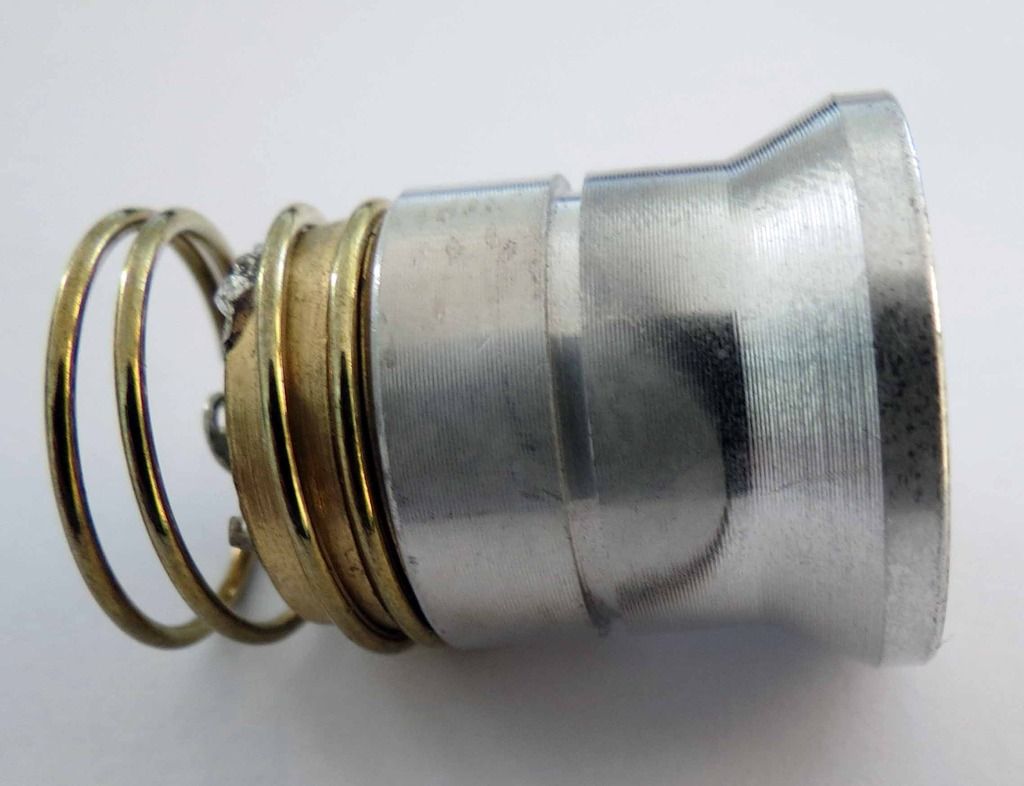
Below a top view with the XPL LED visible.
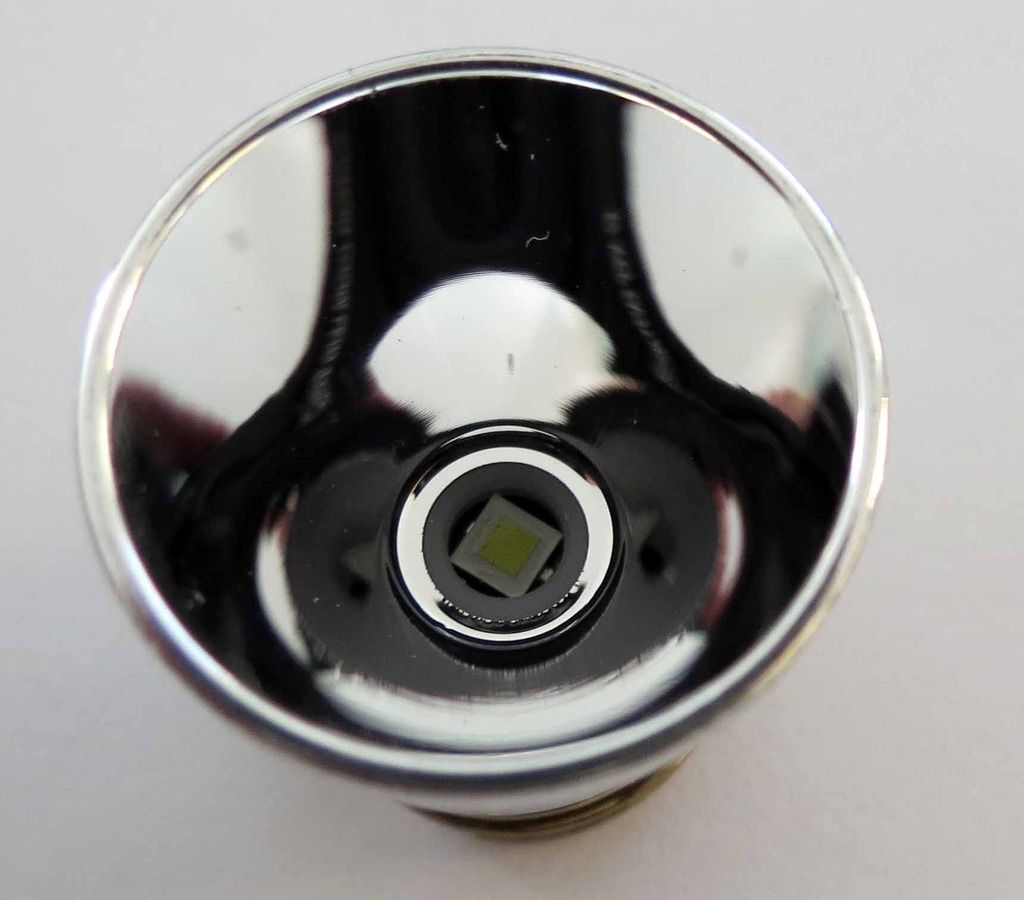
The rear section pill section of the dropin is shown below. The KD V2 driver is clearly visible with the soldered tabs to select the 3 mode option (Low, Medium and High). Quality is ok, one of the surface mount capacitors (C1) offline. The Positive battery terminal spring is a little smaller/shorter than ideal. As a result many flat top batteries will not be suitable depending on the host used. During the evaluation with a Solarforce L2 & L2N hosts the torch would not function as the springs were too short to provide correct contact with the battery terminals. Contact with a protected battery was fine, thus all tests were performed with a Protected 18650 cell.
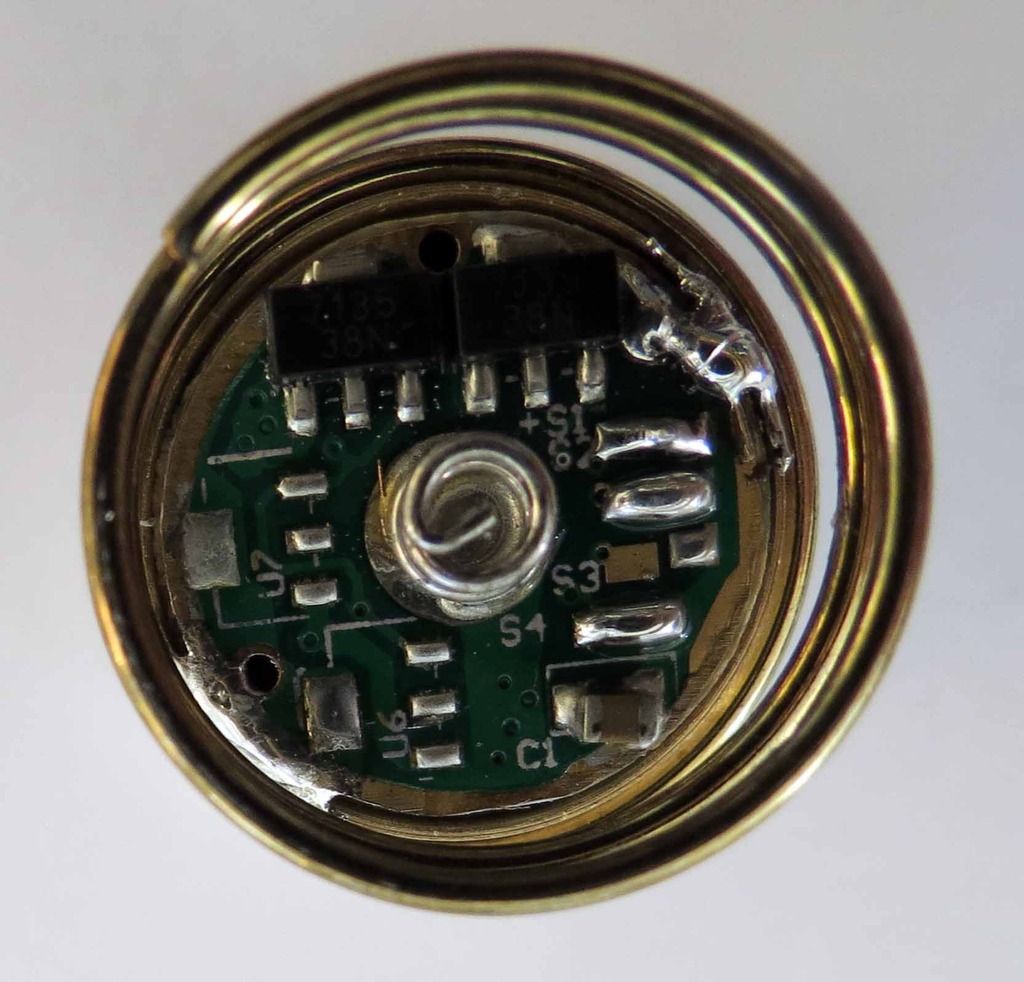
View of the top of the dropin with the reflector removed.
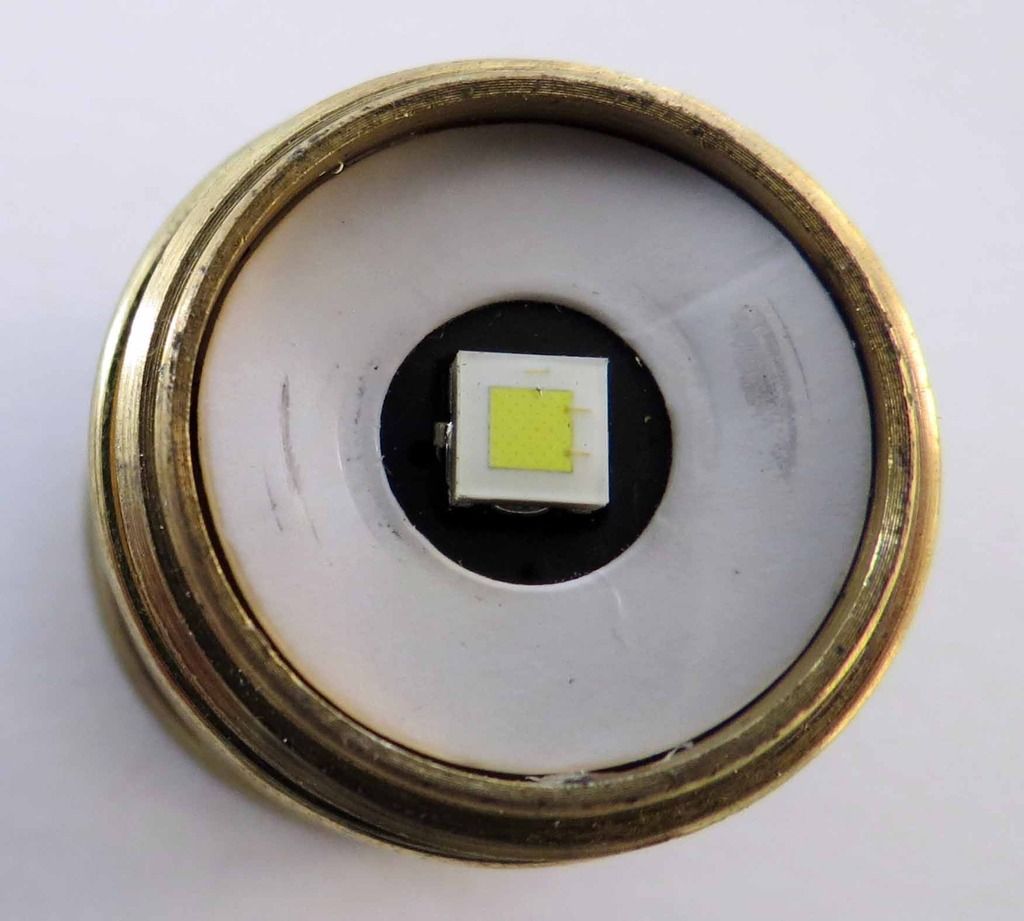
Checking the LED board I found that it wasn’t secured to the shelf of the dropin. The pressure from the plastic LED gasket in the reflector keeps the board in place. There was some white heatsink compound between the board and the shelf.The LED Board is copper.
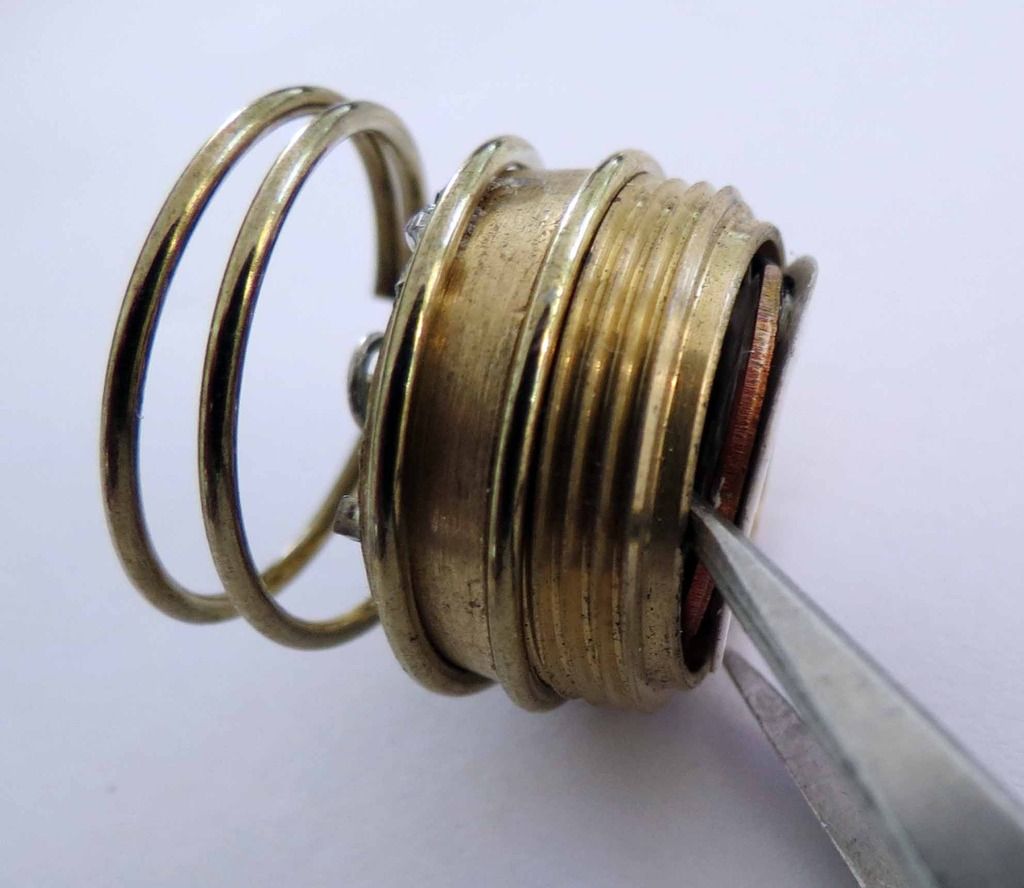
View of the dropin with the included LED gasket. The threads on the reflector are a bit dirty, easily solved.
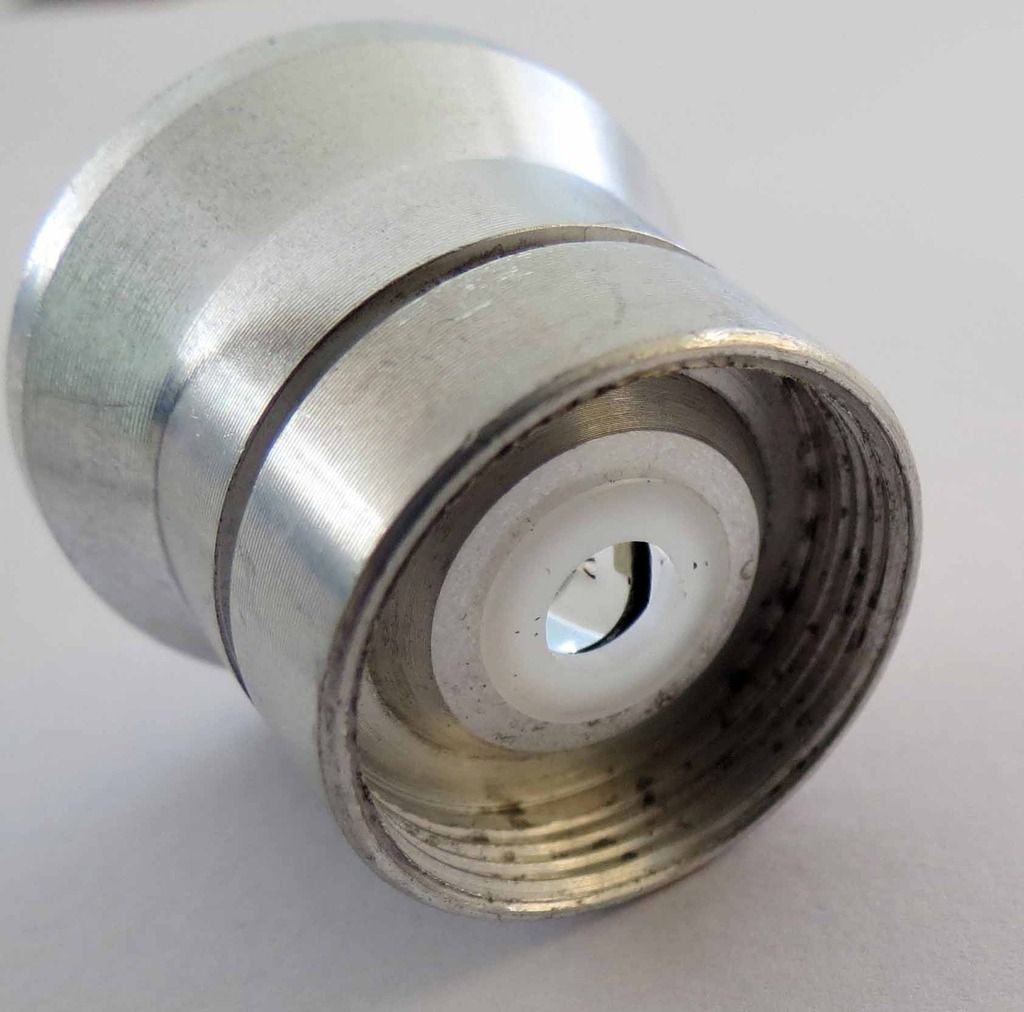
Light Output
The light output is excellent considering the 2.2A current on high. Beam profile is good. The SMO reflector results in more throw than flood. Spill isn’t as bright as shown in the images below in reality. There is spill but not quite the level that came through the photos produced.
The low mode (2%) is quite usable, then there’s a jump in brightness to the medium (35%) and less of a step in output on high.
Beam Shots
Indoor beam shots taken at a distance of les than a meter from a white wall. The outdoor shots are directed to a tree apprimately 60m away.
Indoor - Low
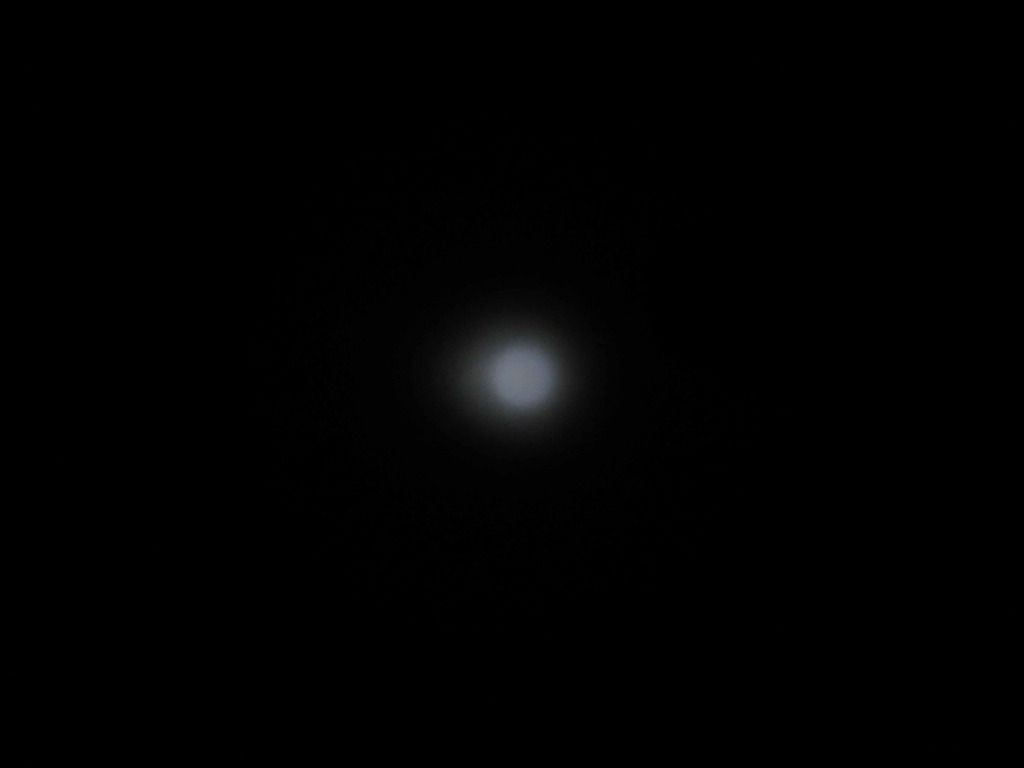
Indoor - MEDIUM
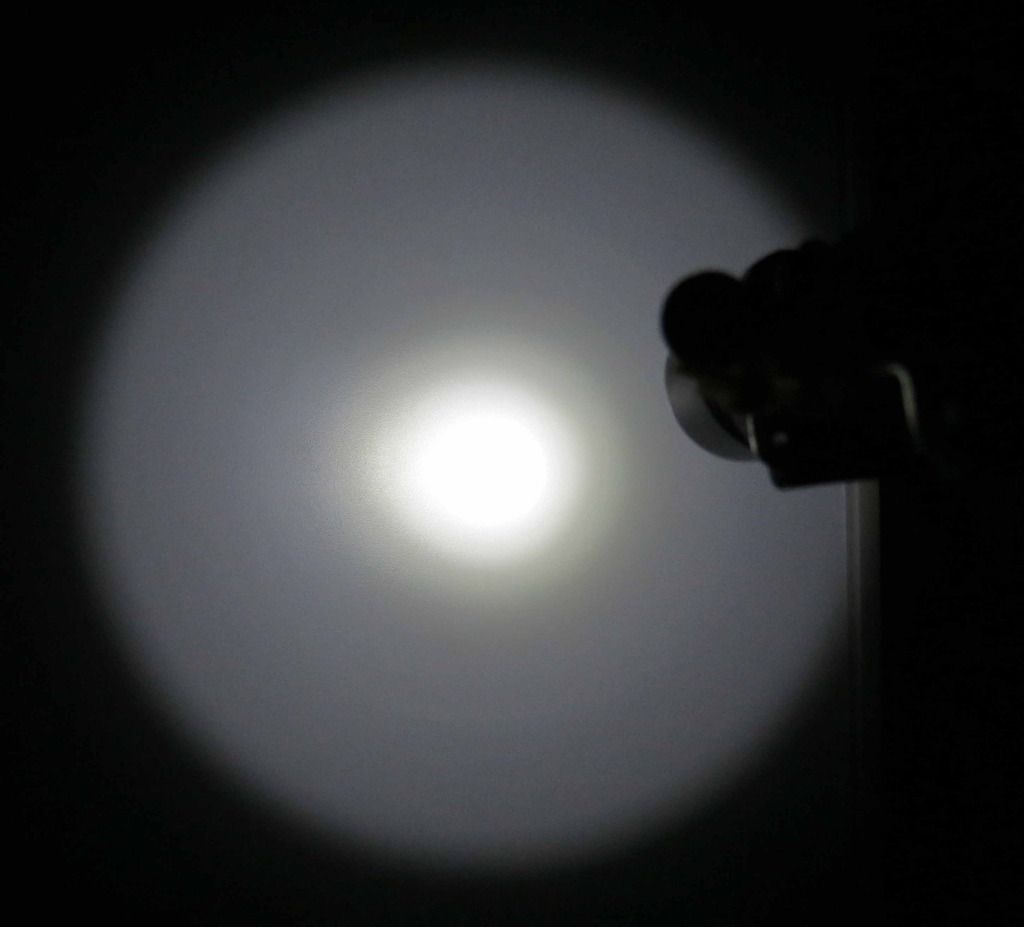
Indoor - HIGH
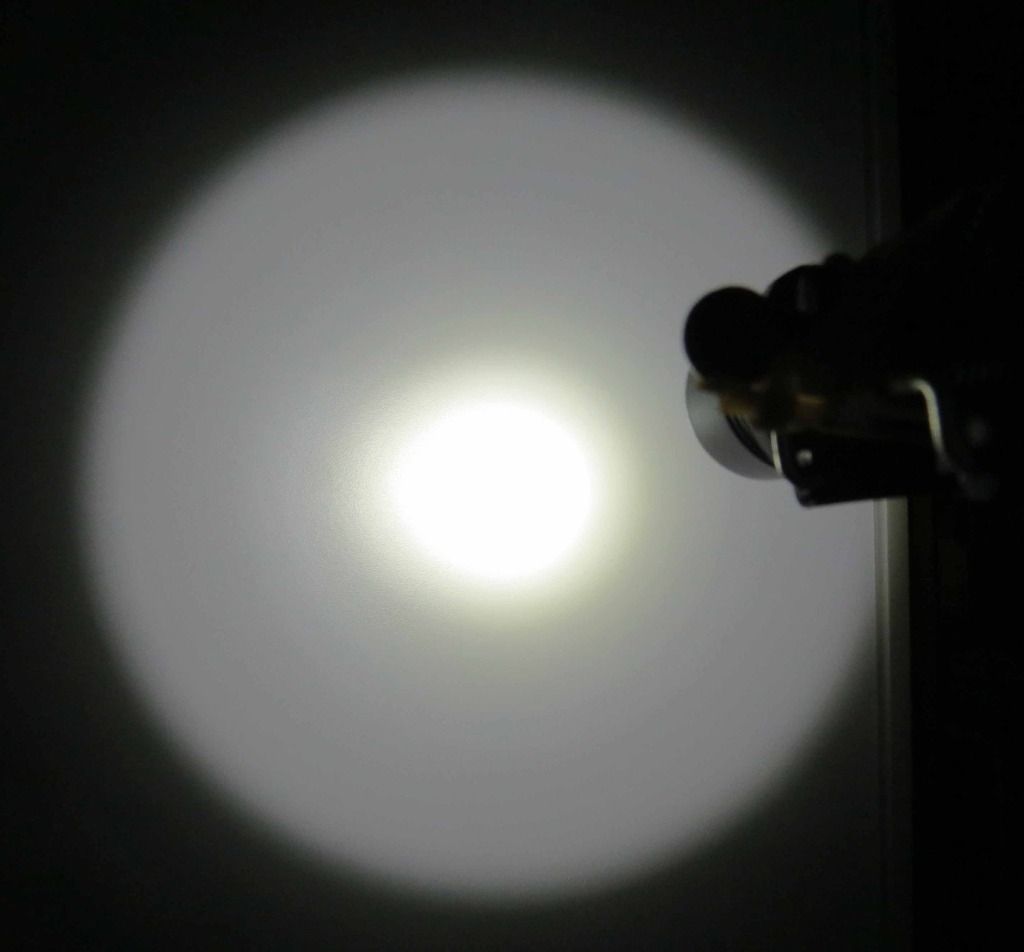
Outdoor LOW
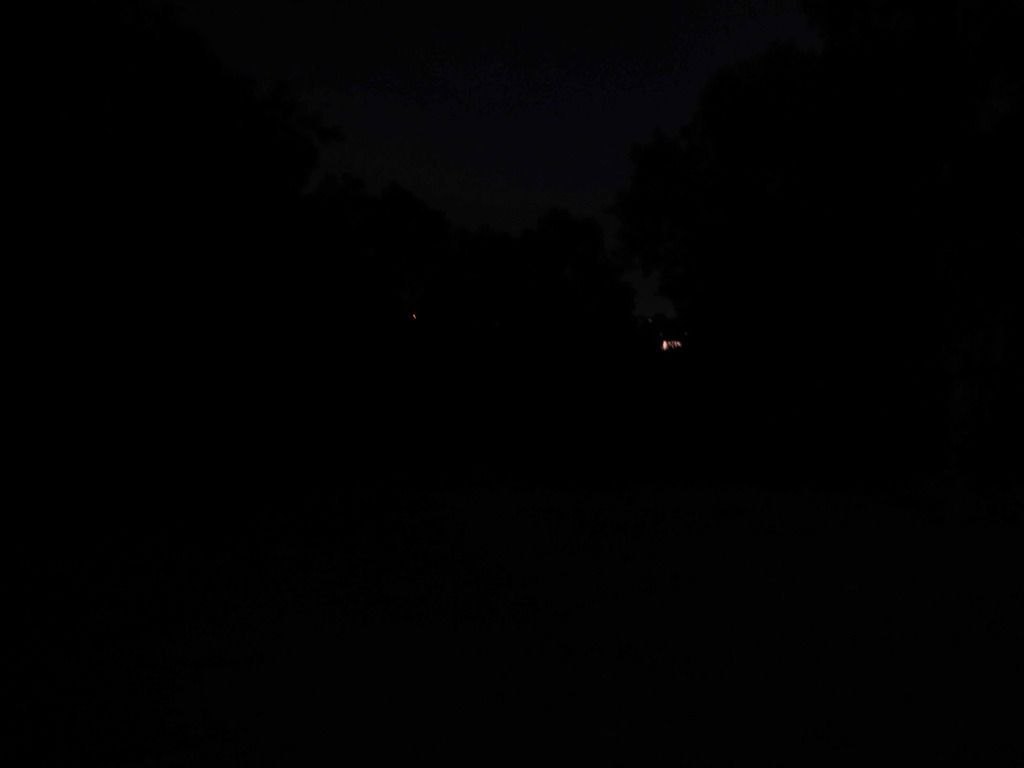
Outdoor - MEDIUM
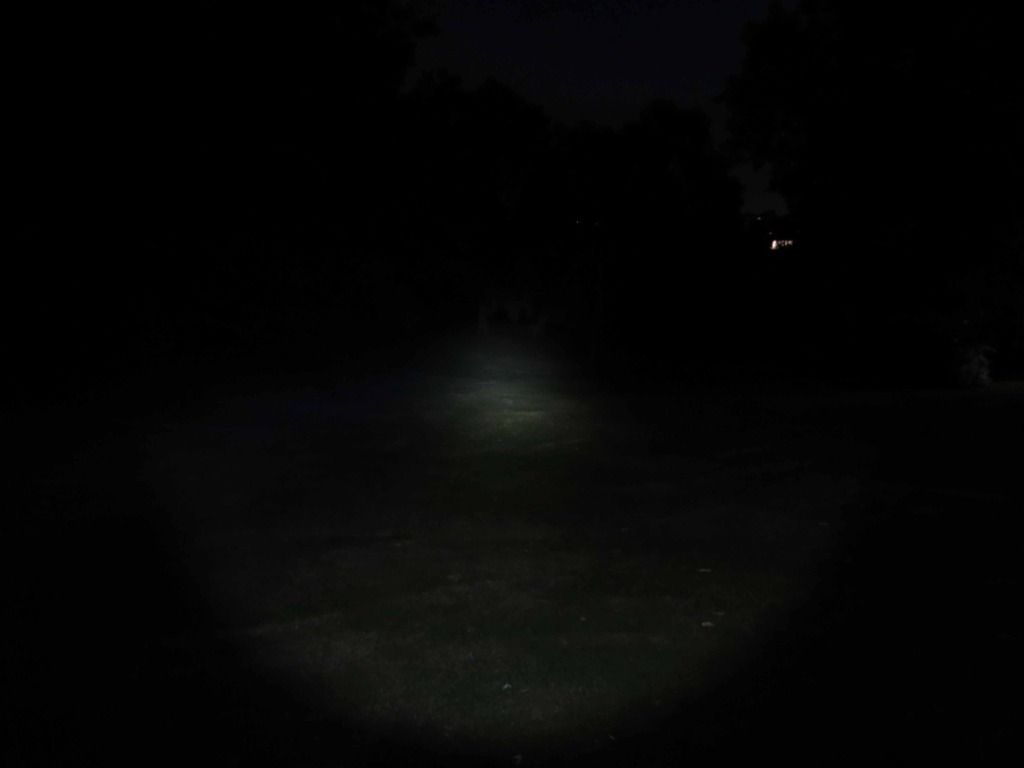
Outdoor - HIGH

10 minute Runtime Test
Results below of the 10 minute runtime on HIGH mode. The measurements show that after 2 minutes the output light level settled and then remained constant with minimal drop for the next 8 minutes. No other form of foil wrapping was provided around the dropin to improve heat dissipation in the L2 host. Temperature readings were not taken as it’s host dependent. The host was very warm to hold at the conclusion of the test which was after 14 minutes. Only 10 minutes of data shown below. The Lux reading at 14 minutes was 163.
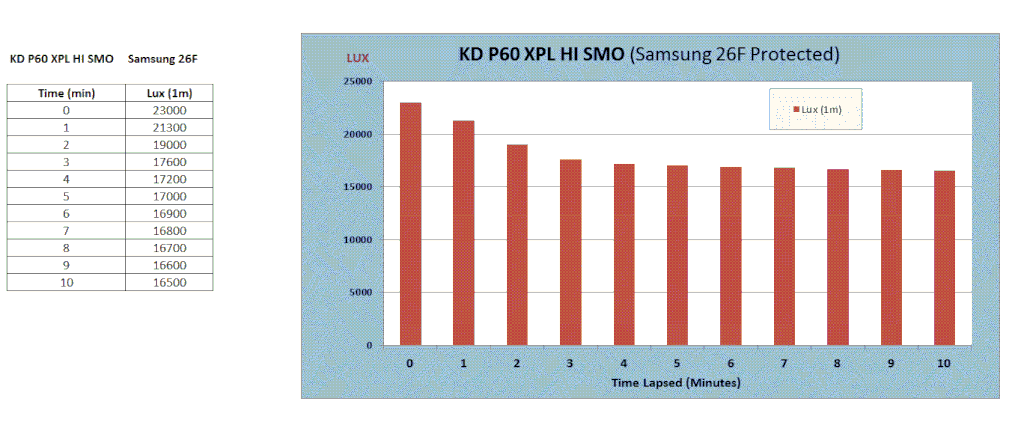
Ceiling Bounce results
The light output of this torch is very good. I was very surprised when first turning on high mode. The brightness is more than expected from a flashlight operating at 2.2A. It compares well against flashlights with high amperage. The ceiling bounce results below show a comparison against other torches, many more powerful.
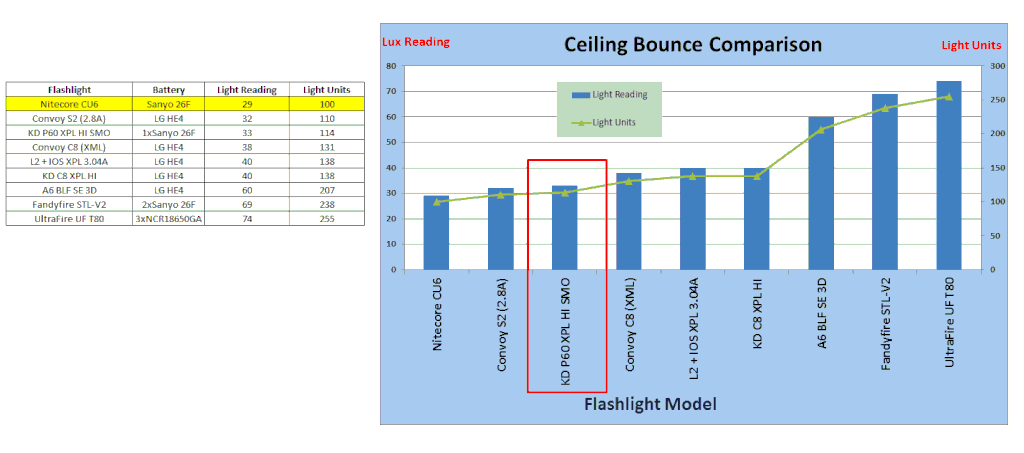
Current Readings
HIGH 2.20A
MEDIUM 0.70A
LOW 0.02A
Summary
The KD XPL HI with 2.2A V2 is quality dropin. I’ve many p60 dropins and found this one performed very well. It combines an excellent LED with a very good driver. Running at 2.2A on high results in a good balance between power consumption, heat production and light output. The P60 Host design isn’t the best for heat dissipation, so running a drop in at 2.2A is a wise design choice. Paired up with a good host such as a Solarforce L2 results in an excellent flashlight. Recommended for those seeking a well designed reasonably priced P60 Drop.
Pros:
- Excellent output at 2.2A
- Excellent value, don't know of a similary performing dropin at this price
- Good balance between throw and some spill.
- 3 Light levels with Memory. LOW, MEDIUM and HIGH.
Cons:
- Positive terminal spring on the driver board is a bit small, limiting use to protected batteries.